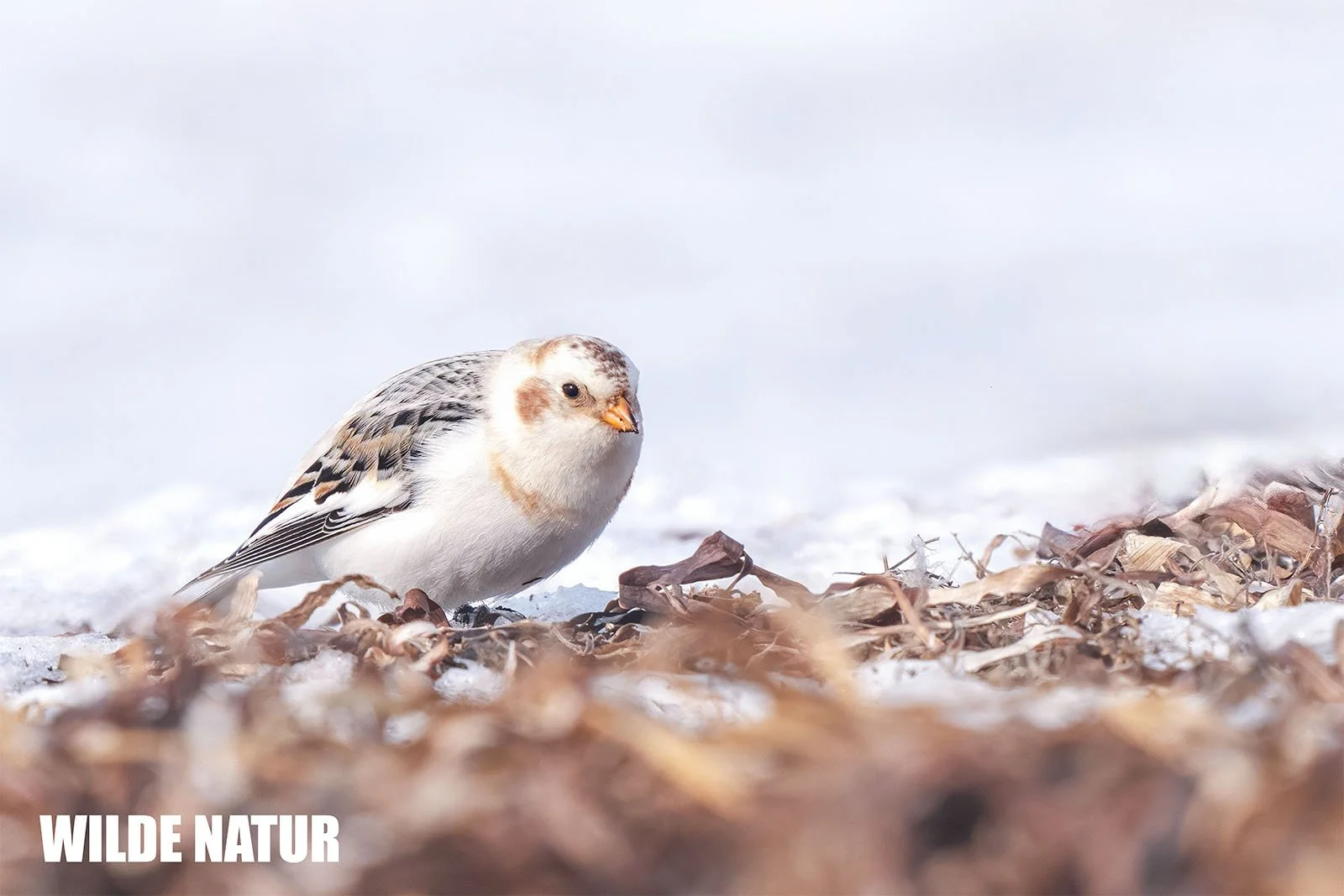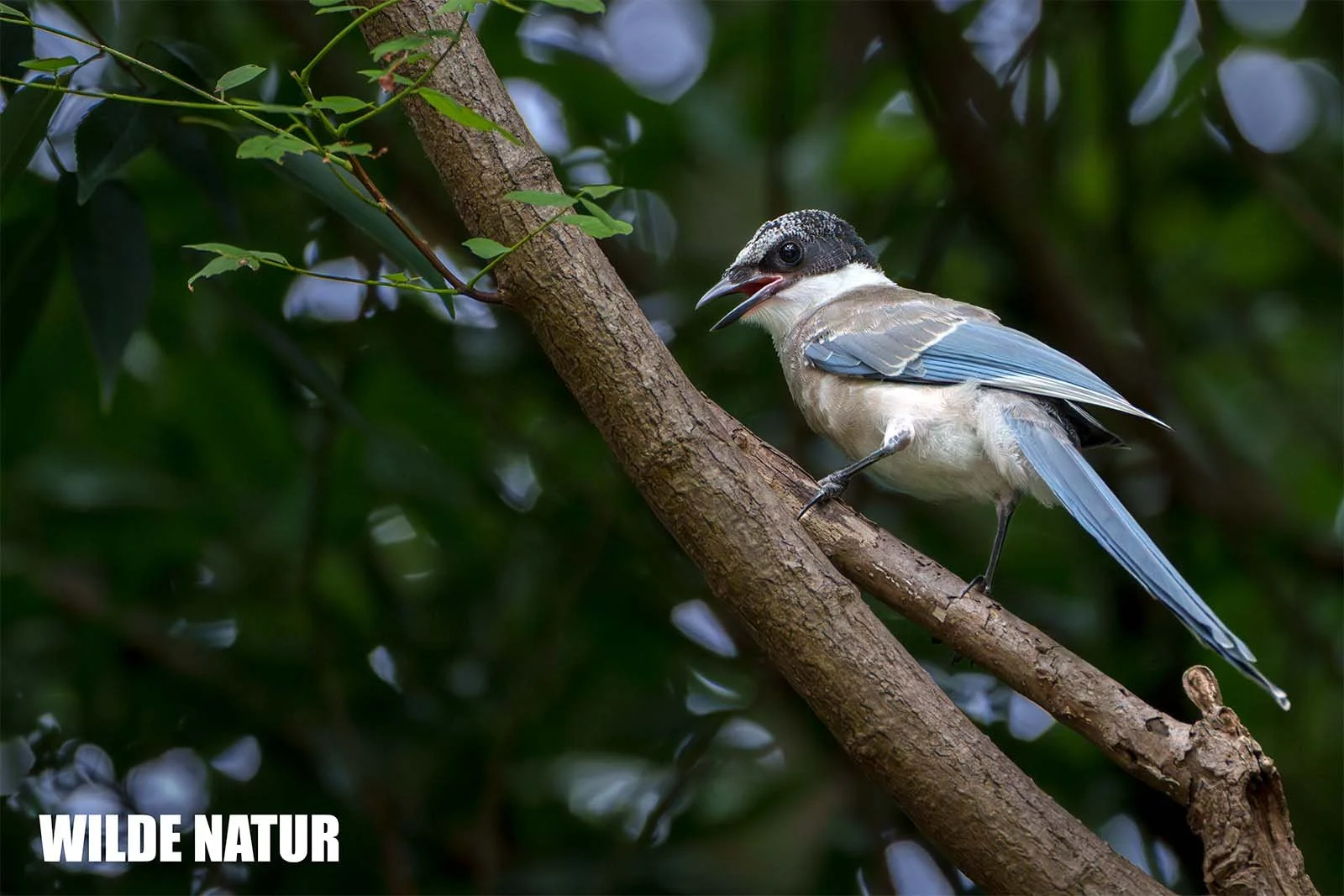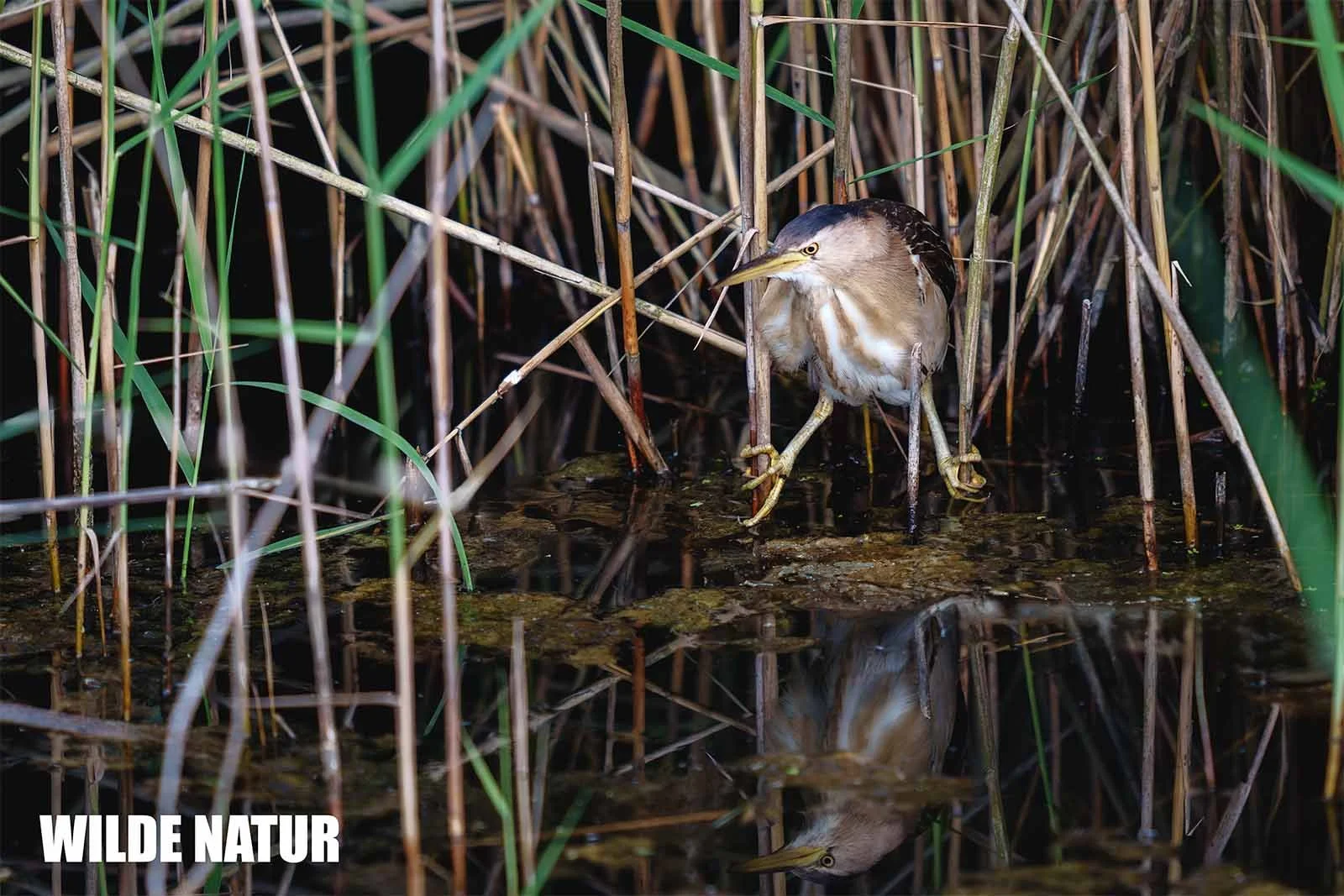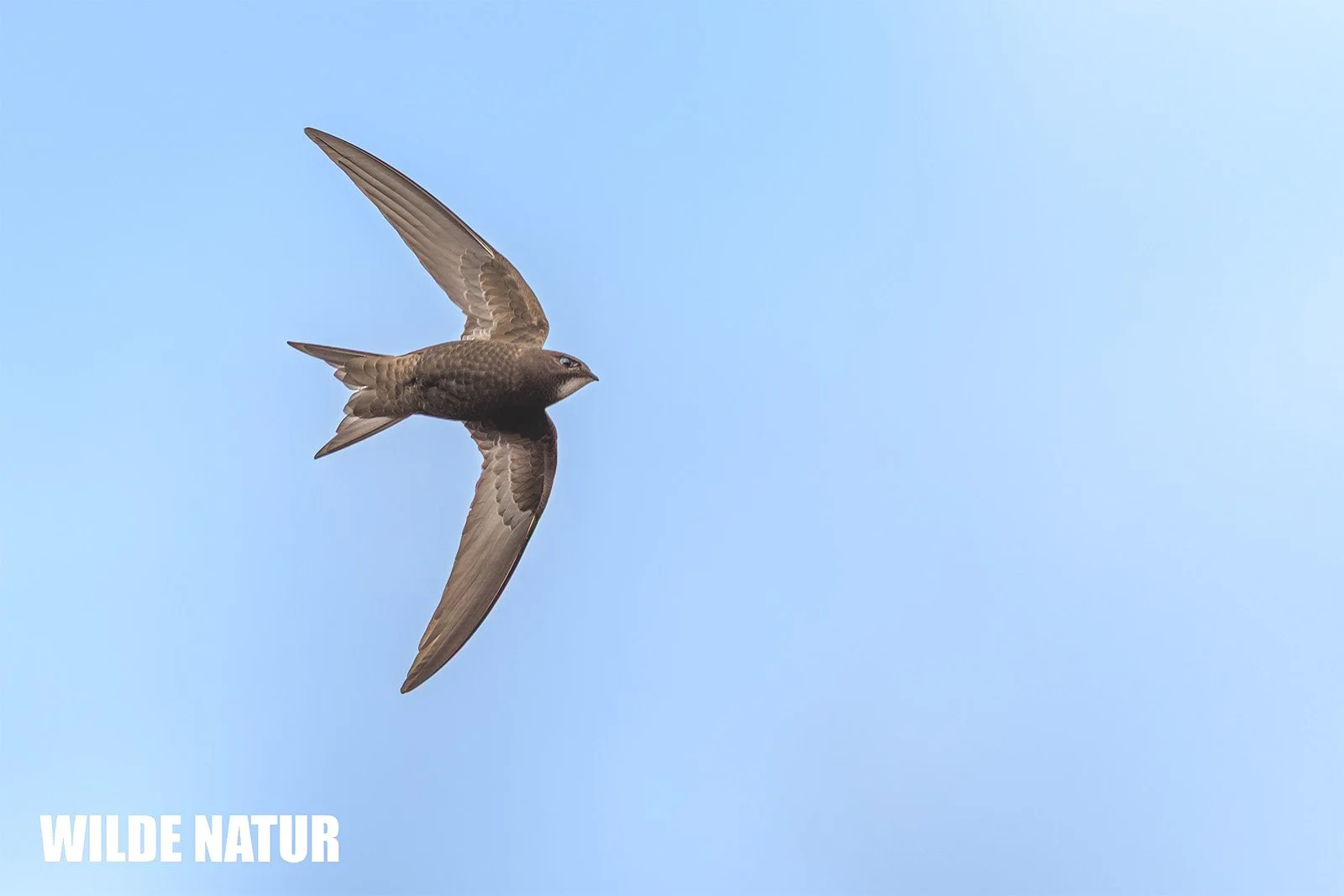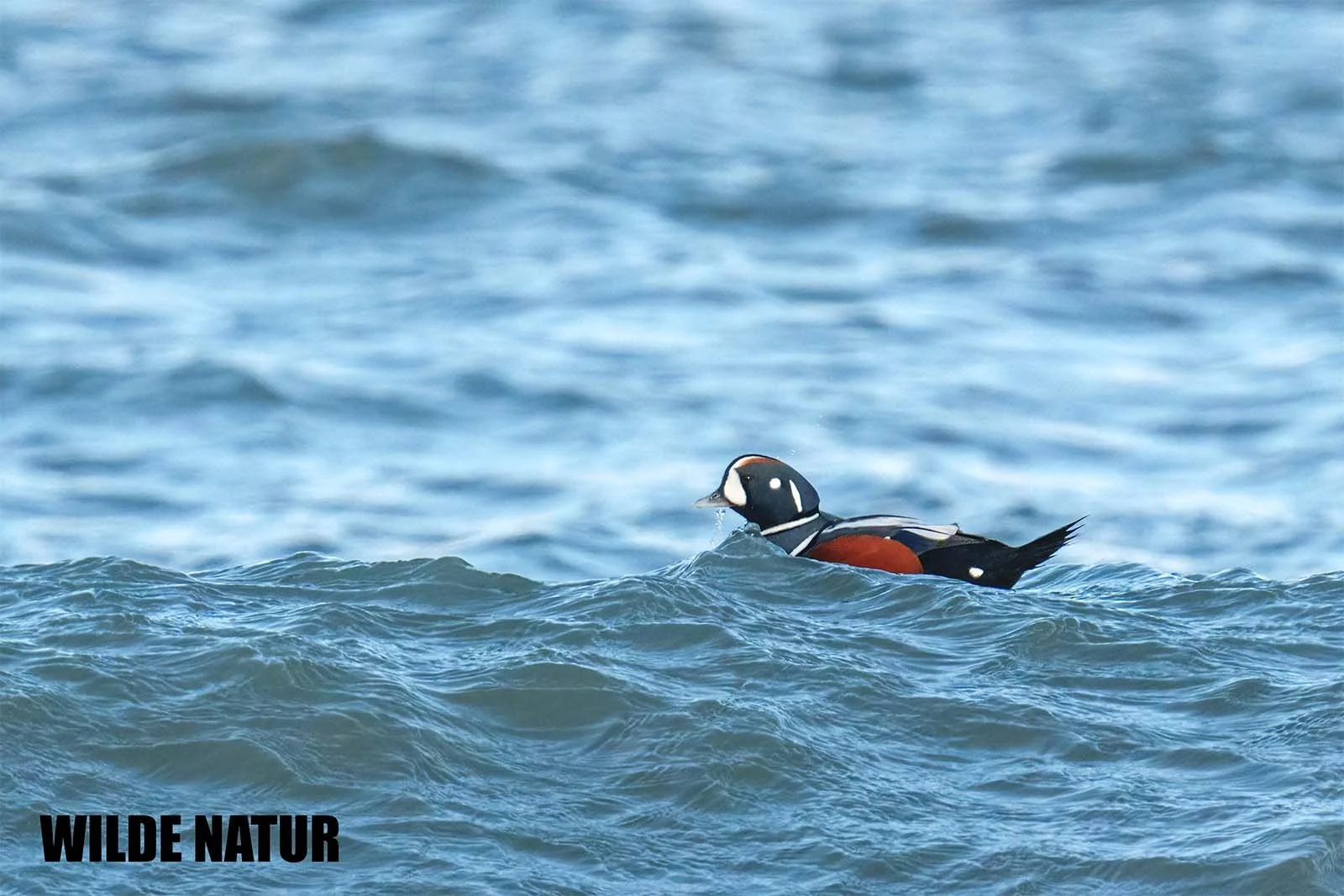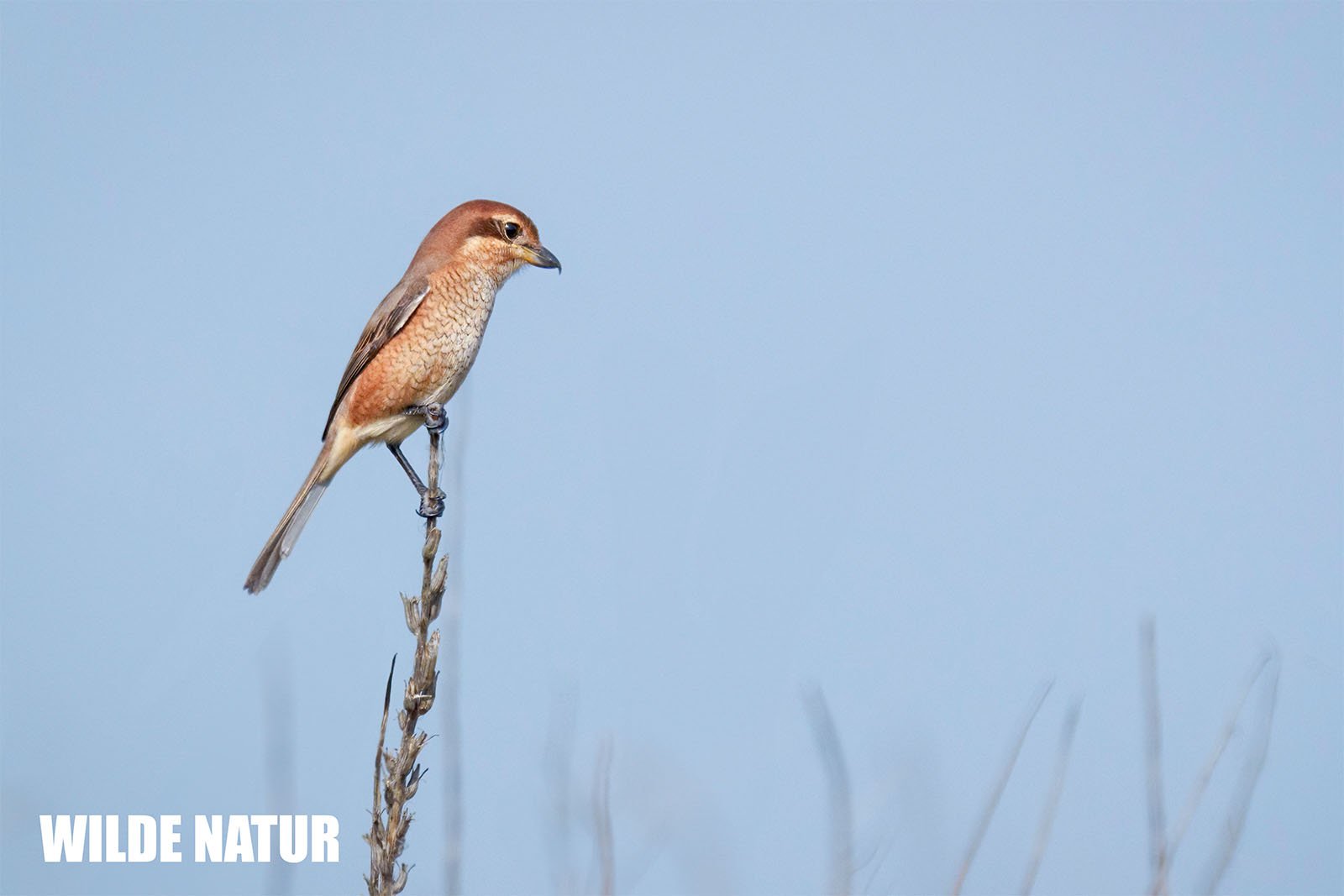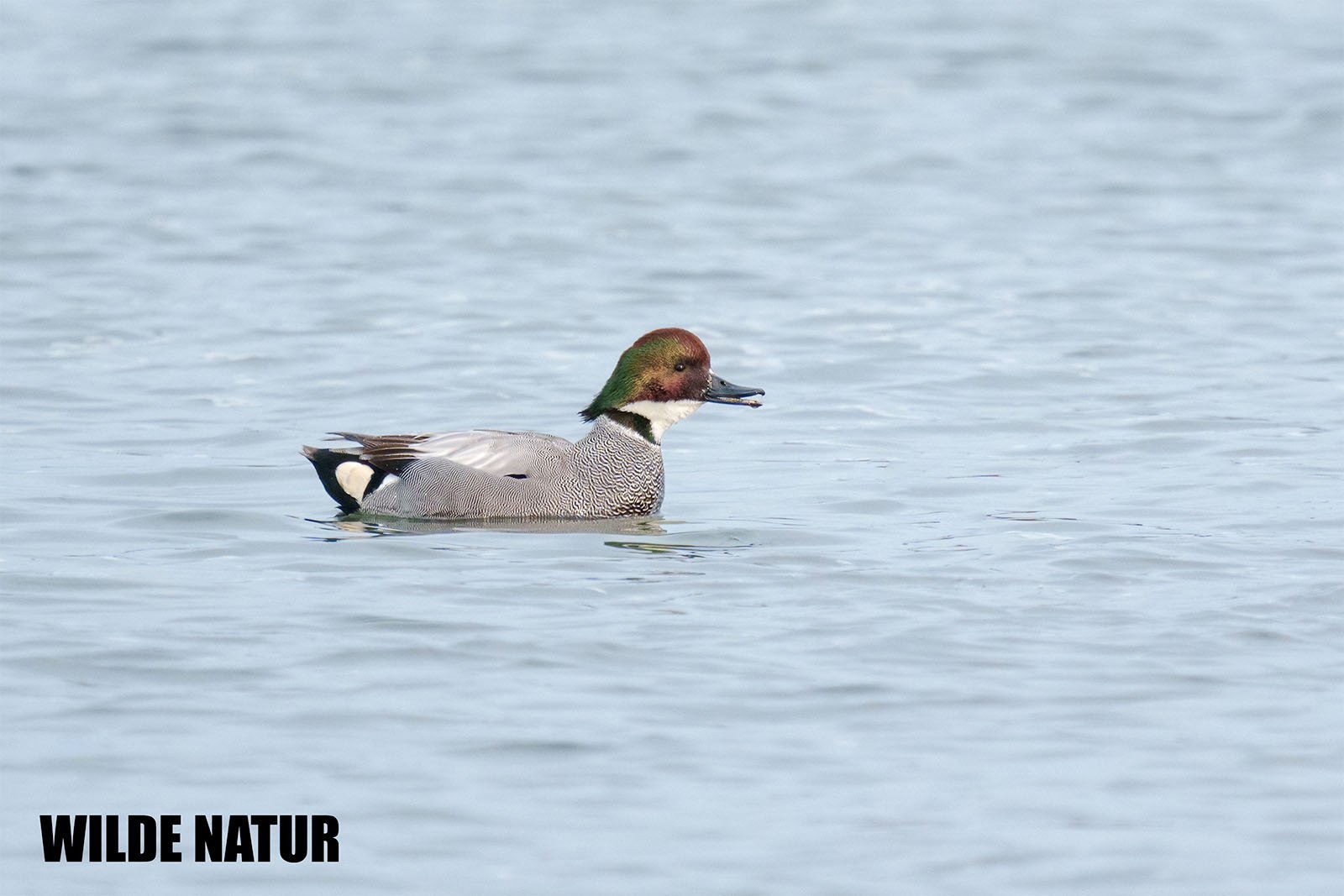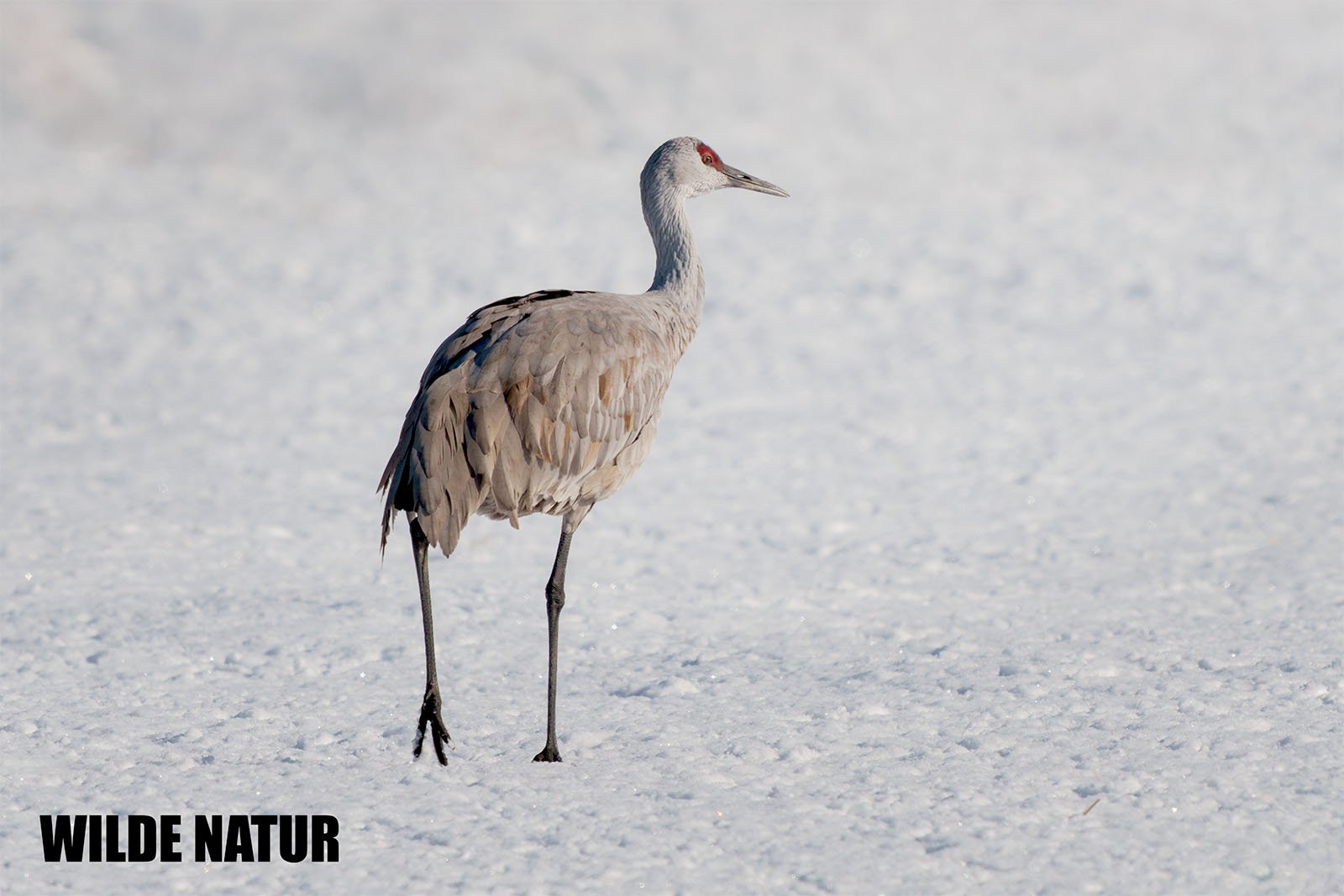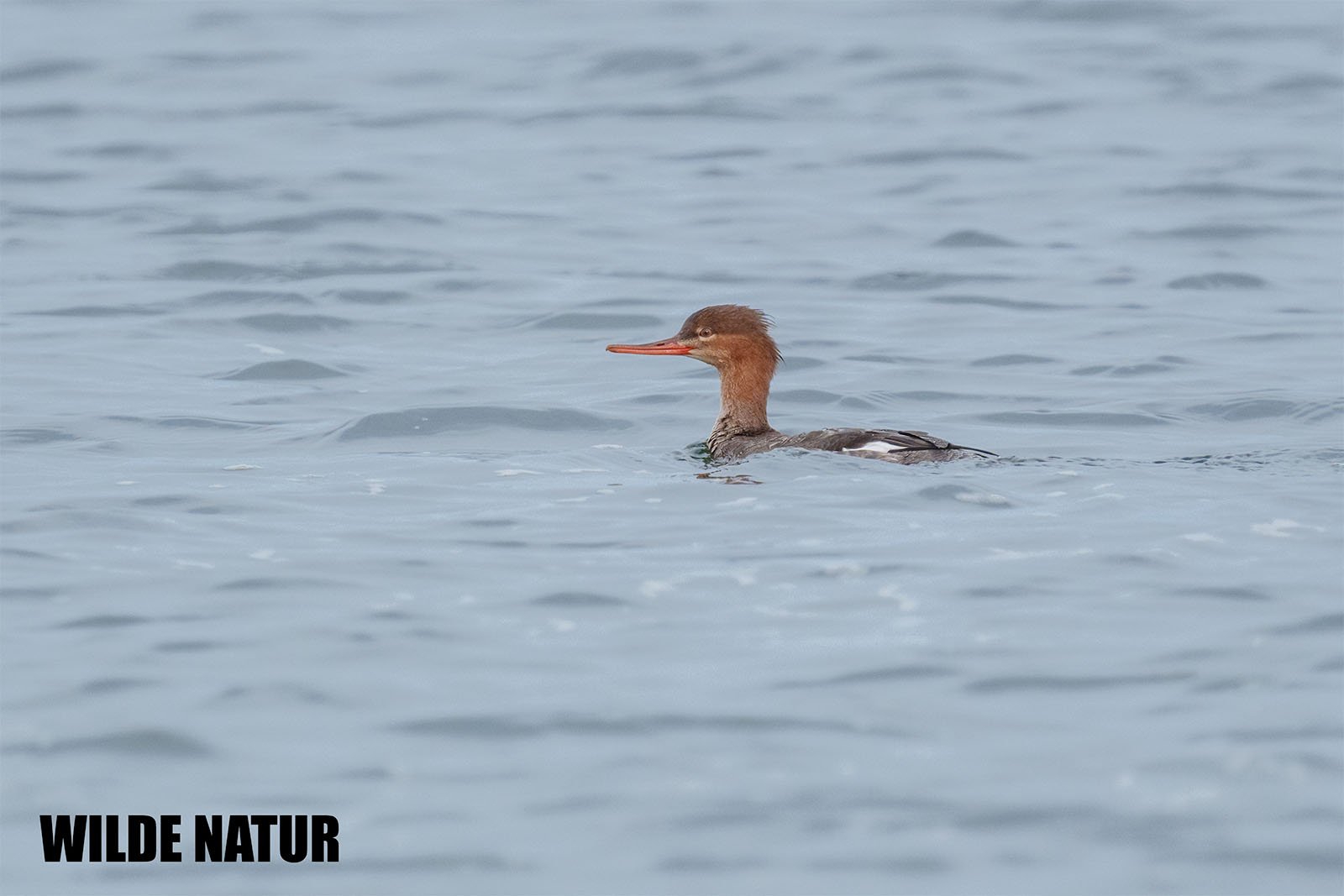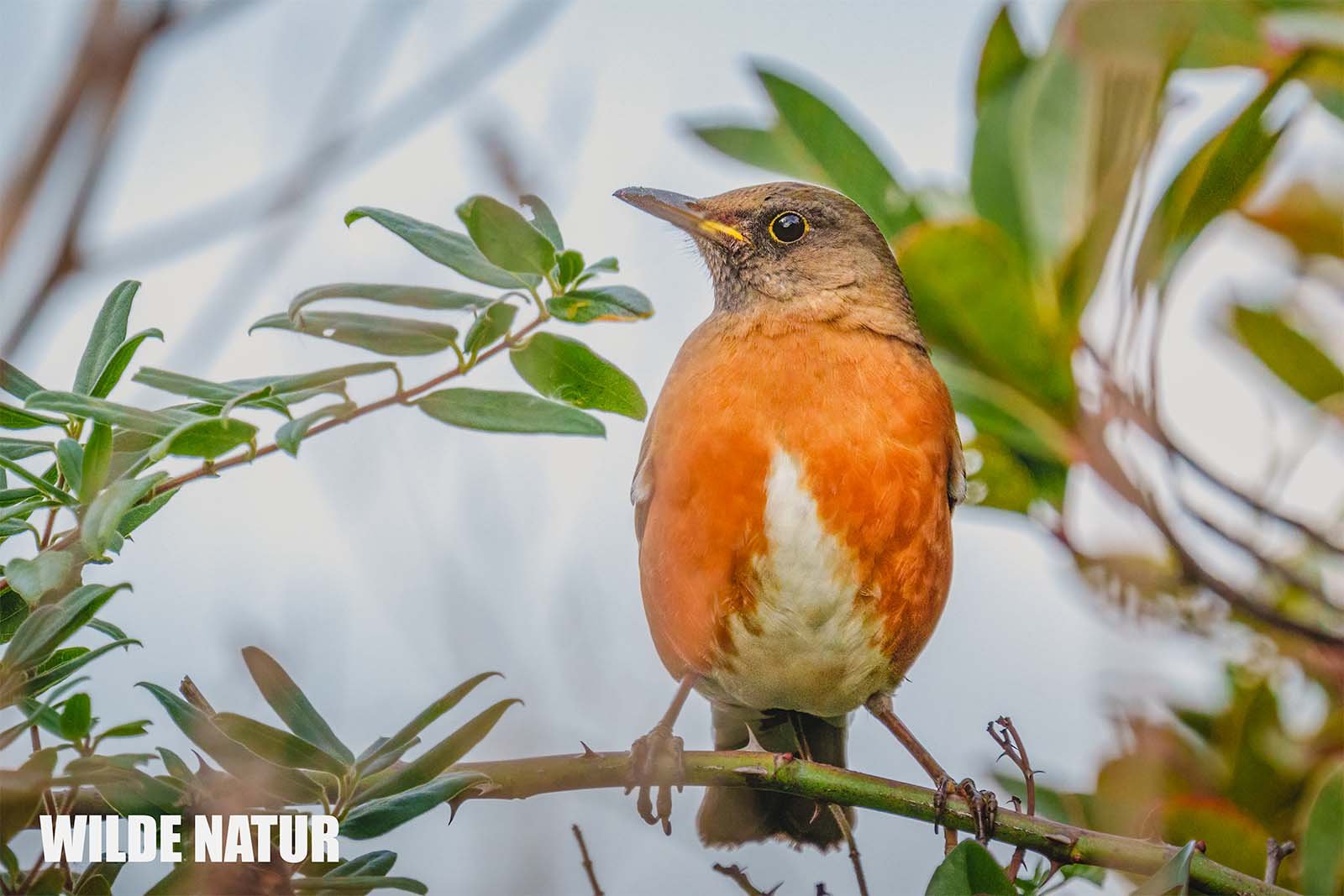Snow bunting (Plectrophenax nivalis)
Snow bunting (Plectrophenax nivalis) with white plumage and dark wings sits on snowy ground among dry leaves.
Snow Bunting – A Winter Bird Sculpted from Snow
With its snowy-white plumage and bright yellow beak, the Snow Bunting is a fascinating winter visitor to Japan's northern regions.
Shortlist
Compact white songbird with dark wing accents
Most frequently seen in winter in Hokkaidō
Found in open coastal dunes, fields, and snow plains
Feeds on plant seeds during winter; breeds only in the Arctic
Sensitive to climate change, but globally not endangered
Scientific Name: Plectrophenax nivalis
Common Name (DE): Schneeammer
English Name: Snow Bunting
Size: 15–17 cm
Weight: 30–40 g
Color (♂ Winter): White with black-brown wings, yellow beak
Color (♀): More brown, less contrast
Beak: Short, strong, yellow
Diet: Seeds (winter), insects (summer)
Breeding: Not in Japan; 4–6 eggs in the Arctic
Season: November–March (winter visitor)
Habitat: Coasts, snow plains, fields (Hokkaidō)
Migration: Long-distance migrant
Conservation Status: Not endangered, but climate-sensitive
Table of Contents
- Introduction
- Appearance
- Habitat
- Diet
- Breeding
- Migration
- Conservation Status
- Descriptive Imagery
- Quick Reference – Snow Bunting
Introduction
It arrives with the northern winds and seems like a piece of ice in motion — the Snow Bunting. Despite its delicate appearance, it defies harsh winter climates with remarkable endurance and is a special visitor along Japan’s wintry northern shores.
Appearance – Snowy White with Dark Contrast
In winter, the Snow Bunting presents a mostly white plumage, accented by dark wing markings. This coloration offers excellent camouflage in snow-covered landscapes.
Male (Winter)
- Upperparts white with black-brown wing patches
- Face and underside snow-white
- Nape beige to sandy
- Tail black with white outer feathers
- Beak short, strong, and yellow
Females and juveniles
- More brown tones and generally less contrast
- Subtly patterned – ideal for open environments
Habitat – Windy Shores and Snowy Plains
In Japan, the Snow Bunting favors open, low-vegetation areas like coastal dunes and snow-covered fields during the winter, particularly in Hokkaidō.
Range
- Most common in Hokkaidō
- Occasionally observed in northern Honshū
Diet – Winter Seed Specialist
During the winter months, the Snow Bunting feeds mainly on seeds from various plants, which it actively uncovers and picks from the ground.
- Forages by scratching and pecking at the surface
- Sometimes in small flocks, occasionally with other field birds
- In the Arctic summer: adds insects, spiders, and small invertebrates
Breeding – Only in the Far North
The Snow Bunting does not breed in Japan. Its nesting grounds lie in the Arctic tundra.
Breeding Details
- Breeding season: June–August
- Nest: Ground depression under stones or dense vegetation
- Clutch: 4–6 eggs
- Only the female incubates; both parents feed the young
Migration – Arctic Visitor
A true long-distance migrant, the Snow Bunting travels between Arctic breeding grounds and southern wintering sites.
- Arrival in Japan: from November
- Departure: March–April
- Wintering exclusively in open, northern habitats like Hokkaidō
Conservation Status – Stable but Sensitive
- Rare in Japan, but not endangered
- Globally stable, but declining in some breeding areas
- Main threats: climate change and shifting Arctic habitats
Descriptive Imagery – For the Visually Impaired
The Snow Bunting looks like a living part of the winter landscape — white, clean, and calm. Its chest and face are snow-white, while dark patches on the wings and back appear like charcoal strokes on paper. Its short yellow beak glows like amber in the cold light.
On the ground it is quick — hopping, scratching, pecking, always searching for seeds. In flight, it shows a white wing band that stands out against the gray sky. Its call is soft and trilling, like a tone rolling across frozen grass. Seeing it is like feeling winter up close.
Quick Reference – Snow Bunting
| Trait | Description |
|---|---|
| Scientific Name | Plectrophenax nivalis |
| Common Name (DE) | Schneeammer |
| English Name | Snow Bunting |
| Size | 15–17 cm |
| Weight | 30–40 g |
| Color (♂ Winter) | White with black-brown wings, yellow beak |
| Color (♀) | More brown, less contrast |
| Beak | Short, strong, yellow |
| Diet | Seeds (winter), insects (summer) |
| Breeding | Not in Japan, 4–6 eggs in Arctic areas |
| Season | Winter visitor: November–March |
| Habitat | Coasts, snowy plains, fields (Hokkaidō) |
| Migration | Long-distance migrant |
| Conservation Status | Not endangered, but affected by climate change |

